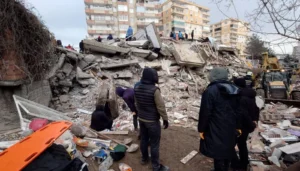Living in areas prone to earthquakes comes with its set of challenges. One of the crucial aspects of safeguarding your home and finances is securing earthquake Insurance. In this, earthquake Insurance. we will delve into the intricacies of Earthquake Insurance, providing insights, debunking myths, and offering practical advice on how to navigate this specialized form of coverage.
Understanding Earthquake Insurance
Earthquake insurance is not your typical homeowner’s insurance. While standard policies cover a range of perils, earthquakes usually require a separate policy due to their unique risk profile. It’s essential to understand the nuances of earthquake insurance to ensure adequate protection in times of seismic activity.
Risk Assessment
Before diving into earthquake insurance options, it’s crucial to assess the risk factors. Geographic location plays a significant role, with seismic zones indicating the probability and intensity of earthquakes. By understanding these factors, homeowners can make informed decisions about the level of coverage they need.
Coverage Options
Earthquake insurance comes in various forms, each offering distinct coverage. From structural damage to personal belongings, policies can be tailored to meet specific needs. However, understanding policy limits and deductibles is key to avoiding surprises when a claim is necessary.
Cost Factors
While the importance of earthquake insurance is clear, cost considerations often sway decisions. Factors such as location, home construction, and local building codes can impact premiums. Our guide will provide valuable tips on managing costs without compromising on coverage.
Importance of Earthquake Insurance
The financial repercussions of earthquakes can be devastating. Without adequate insurance, homeowners may find themselves facing substantial repair costs. This section will highlight real-life scenarios, emphasizing the importance of being prepared for the unexpected.
Common Misconceptions
Misinformation often clouds the decision-making process regarding earthquake insurance. We will address common misconceptions, offering clarity on what insurance does and doesn’t cover. Dispelling myths is vital for homeowners to make informed choices.
Case Studies
Real-life examples provide tangible evidence of the benefits of earthquakes. Through case studies, readers will gain insights into how insurance has been a financial lifeline for homeowners in the aftermath of seismic events.
Steps to Obtain Earthquake Insurance
Securing involves a systematic process. Our step-by-step guide will walk readers through the necessary steps, from documentation requirements to considerations when choosing coverage.
Government Assistance Programs
Government initiatives play a role in supporting homeowners in earthquake-prone areas. This section will shed light on existing programs, explaining how they complement private insurance and benefit those in high-risk zones.
Comparing Insurance Providers
Selecting the right insurance provider is a crucial step. We will provide practical tips for comparing policies and identifying the provider that best meets individual needs. A well-informed choice ensures confidence in coverage.
Earthquake Preparedness Tips
Beyond insurance, preparing for earthquakes involves proactive measures. From structural modifications to safety protocols, this section offers practical advice on fortifying homes and ensuring the safety of occupants.
The Future of Insurance
The landscape of insurance is ever-evolving. In this section, we’ll explore emerging trends and innovations in earthquakes, offering a glimpse into what the future holds for homeowners in seismic regions.
Frequently Asked Questions
To address lingering queries, we’ve compiled a list of frequently asked questions about insurance. Clear and concise answers aim to provide readers with the information they need to make informed decisions.
Conclusion
In conclusion, is not just a financial safety net; it’s a proactive step toward safeguarding your home and family. By understanding the intricacies, dispelling myths, and taking practical steps, homeowners can navigate the seismic landscape with confidence.

